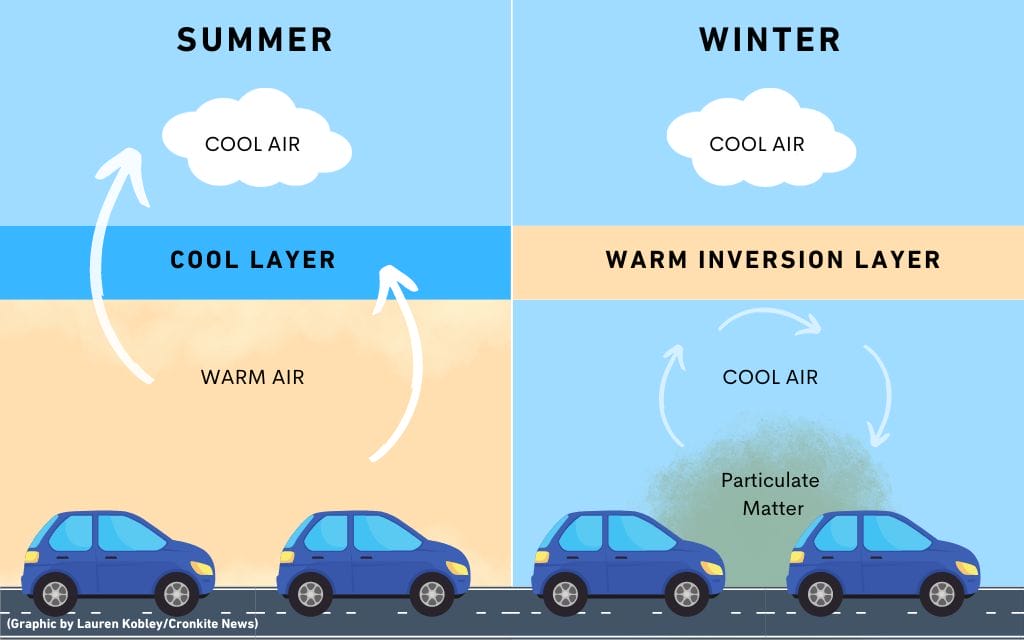Smoke management and air quality are huge issues in Maricopa County. The American Lung Association has the Phoenix-Mesa area in the top 10 most-polluted cities by ozone and by year-round particle pollution in its State of the Air 2023 report.
HEALTHCARE NEWS: Who’s Who in Arizona Healthcare for 2024
The Maricopa County Air Quality Department and the Arizona Department of Environmental Quality are working to maintain the health and prosperity of the environment and residents as it relates to air quality through no-burn days and prescribed-burn smoke dispersion.

The county department looks at smoke readings, particularly during the fall and winter seasons. During the winter, Maricopa County experiences a “temperature inversion.” The inversion creates an atmospheric “lid” over the Valley that traps polluted air. Under normal atmospheric conditions, air is warmer near the ground and colder at higher altitudes. In a temperature inversion, the situation inverts, and cold air at the surface gets trapped under a layer of warmer air, according to Maricopa Air Quality’s website.
“When our monitors read high levels of smoke and the federal health standard set by the Environmental Protection Agency, we issue a no-burn day in Maricopa County,” Ari Halpert, spokesperson for Maricopa County Air Quality, said in a phone interview. The department looks for the PM2.5, or particulate matter that is 2.5 microns in size, which are easily inhaled and pose the greatest health risk.
According to the EPA, particulate matter is caused by a mixture of solid particles that attach to liquid droplets in the air. Dust, dirt, soot and smoke particles are among the types of particulate matter. Most comes from construction sites, unpaved roads, fields, smokestacks and fires. These particles are formed in the atmosphere in reaction to chemicals such as sulfur dioxide and nitrogen dioxide. Those chemicals are emitted from power plants, factories and cars.
If particulate matter gets into the lungs and bloodstream, it can cause major health problems. Too much exposure to particulate matter may cause nonfatal heart attacks, irregular heartbeat, aggravated asthma, decreased lung function and increased respiratory issues.
In addition to causing health complications, particulate matter can contribute to environmental problems, including lake and stream acidity, changes in the nutrient balance in coastal waters and river basins, depleted nutrients in the soil, damage to sensitive crops and acid rain.
Holiday fireworks often add smoke to the atmosphere that causes the air quality to exceed federal health standards. Fireplaces and fireworks led to an especially smoky New Year’s with no-burn days issued for Dec. 31 and Jan. 1 in Maricopa County.
From 2013 to 2023 the average number of no-burn days per year due to smoke was six. In 2023 there were seven.
To regulate these no-burn days, Maricopa County sends out burn patrols that respond to resident complaints of illegal burning. When an inspector finds illegal burning, a fine is issued. Burning in fireplaces, chimneys and wood-burning stoves in a residential area can lead to a fine from $50 to $250. Other outdoor burning is at least a $200 fine.
Halpert said the county follows ADEQ and EPA policies and regulations.
ADEQ has its own smoke-management program that begins with smoke dispersion for prescribed burns. The department has a team of trained meteorologists that gets requests for burn permits from state and federal land managers. The team looks at where the possible burn may be and what the meteorological conditions are.
Smoke dispersion modeling shows where the smoke may go, how it may be produced, how high into the atmosphere it could go and how long it can linger.
To help prevent negative effects on the atmosphere, ADEQ has developed emission reduction techniques. These techniques are used by the state or federal land managers to help mitigate the amount of smoke produced.
“There is a thing called backing fires, where instead of having the wind push the fire, the fire burns backwards into the wind so it’s a slower-burning fire. It helps for better consumption of the fuels,” said Bradley Busby, manager of the monitoring and assessment of ADEQ’s Air Quality Division. Prescribed fires can help prevent wildfires, but limiting the emissions and damage that the smoke will cause is important.
“Prescribed burning is to help protect communities and prepare the forest to be more resilient to future catastrophic wildfires. Short-term smoke impacts for prescribed fires will hopefully eliminate the risk of larger smoke impacts from a large wildfire down the line,” Busby said in an interview. “Fires are important for the forest ecosystem, where some forests depend on fire to come through on a regular cadence to clear out underbrush and open grass areas for wildlife to feed on.”




